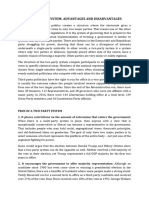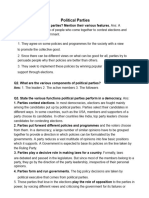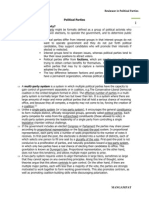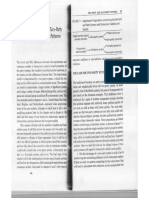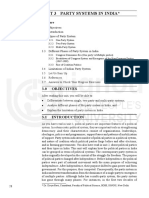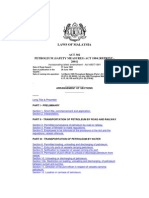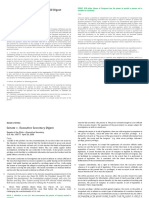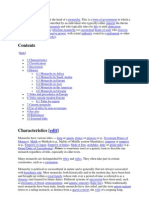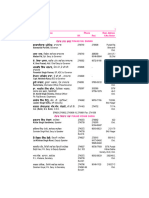MULTI-PARTY SYSTEM
A multi-party system is a system in which multiple political parties have the capacity to
gain control of government offices, separately or in coalition. In other words, multi-
party systems are systems in which more than two parties are represented and elected
to public office.
Australia, Canada, Nepal, Pakistan, India, Ireland, and Norway are examples of countries
with two strong parties and additional smaller parties that have also obtained
representation. The smaller or “third” parties may hold the balance of power in a
parliamentary system, and thus may be invited to form a part of a coalition
government together with one of the larger parties, or may provide a supply and
confidence agreement to the government; or may instead act independently from the
dominant parties.
More commonly, in cases where there are three or more parties, no one party is likely to
gain power alone, and parties have to work with each other to form coalition
governments. This is almost always the case in Germany on national and state level, and
in most constituencies at the communal level. Furthermore, since the forming of
the Republic of Iceland there has never been a government not led by a coalition,
usually involving the Independence Party or the Progressive Party. A similar situation
exists in the Republic of Ireland, where no one party has held power on its own since
1989. Since then, numerous coalition governments have been formed. These coalitions
have been led exclusively by either Fianna Fáil or Fine Gael.
Political change is often easier with a coalition government than in one-party or two-
party dominant systems. If factions in a two-party system are in fundamental
disagreement on policy goals, or even principles, they can be slow to make policy
changes, which appears to be the case now in the U.S. with power split between
Democrats and Republicans. Still coalition governments struggle, sometimes for years,
to change policy and often fail altogether, post-World War II France and Italy being
prime examples.
1
�Advantages of a Multi-Party System
A multi-party system affords citizens the opportunity to have as many choices as
possible. As such, those in support of the system say it is democratic.
Multi-party systems tend to encourage peaceful change of governments. The
existence of many parties means that there are other parties waiting for their
turn to be voted into power can discourage crude means of gaining political
power.
Since there are many parties that are formed in a multi-party system, this allows
for minority groups among the electorate to be represented. This also allows for
increased political participation by the masses.
Another advantage of the operation of a multi-party system is that it allows
opposition parties to exist. When there is opposition, it could encourage optimal
results.
The operation of multi-party allows open and constructive criticism of the
policies of the ruling government. This prevents the leaders of the ruling party
from becoming despotic or tyrannical.
It may encourage voter participation.
Ensures links with critical electoral stakeholders.
Disadvantages of a Multi-Party System
In many cases, no one party is able to gain power alone. Therefore, it leads to
difficulty in formation of government. Some parties might have to come together
before a government can be formed and these coalition governments can be
weak and unstable.
It can be expensive to operate since all the parties vying for political power must
convince the people to vote for them. They organize rallies, advertise in the
media and so on in order to carry out their campaigns and reach voters.
2
� Electorates can become bombarded with so many choices to the point where
they get confused.
Another disadvantage of multi-party system is that it can lead to divisions in the
nation. This is especially so in Africa where parties could be formed along tribal,
religious or ethnic lines.
When there are many parties vying for the ultimate goal of ruling the country, it
can degenerate into an unhealthy rivalry among the various parties. This could
eventually stifle development and progress.
It leads to political instability and often appears to be very messy.









